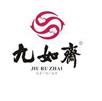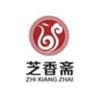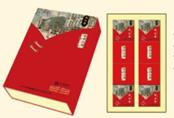1.Introduction
Time-honored brand names are not only precious legacies of our traditional commercial culture in China but also integral components of socioeconomic development. During the critical period of China’s economic transition and development, time-honored brands face significant challenges. Many time-honored brands are pondering how to rejuvenate their presence in the market competition.
In the context of the new media environment, there is a new transformation in brand image communication. The question of how traditional brands can continue to thrive remains unanswered. At the inception of the People’s Republic of China, there were over ten thousand recognized “time-honored Chinese brands.” In the history of Changsha, there were already more than 300 time-honored brand names. The majority of time-honored businesses are limited in scale, and their brand development has been constrained, leading to crises in their operations. These issues are closely related to brand image. A strong brand image necessitates a focus on image improvement. Only through optimizing and enhancing the existing brand image can a brand secure its position in the market.
2.Research Objectives and Significance of the Study on the Current Status and Image Communication Strategy of Changsha’s Time-Honored Brand, Jiu Ru Zhai
2.1Research Objectives
In the midst of changing times, while time-honored brand names are continuously being unearthed and preserved, they are also gradually disappearing. It is imperative to devise brand strategies suitable for modern communication. This study aims to conduct a comprehensive examination of the communication issues faced by the time-honored brand, Jiu Ru Zhai, and to delve into the current status and image communication strategies of the first batch of time-honored brands in Hunan, China. The objective is to harness the potential of the time-honored Chinese brand and elevate its brand recognition and economic benefits.
2.2Research Significance
This study primarily focuses on addressing the real issues confronting Hunan’s time-honored Chinese brands. It amplifies the attention given to the food service industry. By researching the brand image of Changsha’s time-honored Chinese brand, it seeks to gather essential information about the brand market in Changsha. Consequently, this study will provide relevant data for the analysis of the Jiu Ru Zhai brand and offer theoretical guidance and practical evidence for the development of Changsha’s time-honored Chinese brand.
3.The Current Status of Jiu Ru Zhai’s Communication
3.1Jiu Ru Zhai Brand Background
As one of the first traditional brands in Changsha, “Jiu Ru Zhai” was founded in 1915 and has a history spanning nearly a century, originating from its original location, Bajiao Pavilion. Jiu Ru Zhai is steeped in cultural significance, with a rich history of 91 years, as evidenced by the couplet “San Duo Zhai, San Yuan Zhai, San San Ru Jiu Jiu Ru Zhai,” showcasing its deep historical roots.
Jiu Ru Zhai is one of Changsha’s first “China Time-Honored” brands. Its traditional products have long been favored by the local citizens, with attention, affection, and recognition levels consistently exceeding 90%. This is largely due to local consumers. Today, consumers advise Jiu Ru Zhai to innovate, adapt to the changing times, follow market demands, attract a broader audience, and chart a course for new development. Among Jiu Ru Zhai’s products, the most significant development has been in traditional holiday and seasonal products, gradually becoming the preferred and essential choice for consumers.
3.2Image Communication Overview and Content
3.2.1Communication Situation
In recent years, traditional brands have been seriously impacted by both foreign and domestic emerging brands. As the city with the highest number of tourists, brand image is a key attraction factor. The construction of the brand’s own image, eye-catching brand symbols, creative product packaging, and distinctive advertising in the new media environment all serve to enhance the brand image and highlight its unique features. To promote the development of traditional brands, it is imperative to innovate their brand image. Many of Hunan’s traditional brands have stepped out, emphasizing their unique characteristics and strengthening the development of these brands.
There is a significant body of literature regarding the image of traditional brands in China, but in-depth research on this topic is relatively scarce. Neglecting the image of traditional brands leads to inadequate research. With the changes in the Chinese market, especially in provincial capital cities like Changsha, known for its internet celebrity status, the presence of “Jiu Ru Zhai” is barely visible. Many traditional brands have even disappeared without a trace, and companies have faced decline as a result. Within the rich cultural background of traditional brands, both the enterprises and the culture must undergo rejuvenation to overcome the challenges faced by traditional brands.
In the study of the image of local traditional brands, focusing on the development history and rebranding of Jiu Ru Zhai, a Hunan China Time-Honored brand, this paper provides suggestions for the reconstruction of Jiu Ru Zhai’s traditional brand image.
3.2.2Visual Design
With the advancement of new media, consumers choose products based on their visual appeal, making brand image the primary factor. Brand identity should clearly convey cultural elements and characteristics through visual effects, such as name, packaging, logos, and other elements. This type of visual identity (VI) design creates a specific visual impression for consumers, which is equally important for traditional brands.
The brand logo is similar to a corporate logo, and high recognizability is crucial. It must differentiate itself from other logos and accurately express cultural elements. Changsha’s traditional brand, Jiu Ru Zhai, uses a script that is reminiscent of Chinese brushwork (e.g., Figure 1), making it a distinctly Chinese brand, highlighting its traditional cultural significance. However, this logo, with its ancient style, bears a resemblance to other traditional brand logos, particularly those that use standard script. For example, Beijing Tong Ren Tang, another China Time-Honored brand, uses a similar script (e.g., Figure 2). While both brands employ traditional brushwork, these logos might appear similar to consumers, lacking the unique and personalized aspect essential in brand identity [1].

Figure 1: Jiu Ru Zhai brand name logo.

Figure 2: Beijing Tong Ren Tang logo.
In the early stages of Jiu Ru Zhai’s brand design, the logo featured an animal-like shape with a number 9 inside its abdomen, while the pinyin “Jiu Ru Zhai” was inscribed on the animal’s head, seemingly a simple design with the most distinctive element being the number “9” in the center (e.g., Figure 3). The overall design lacked vitality and failed to express the brand’s characteristics. As time progressed, Jiu Ru Zhai’s brand logo underwent a transformation, incorporating traditional Chinese elements like auspicious clouds in the design. It became more modern, emphasizing a concise and sharp expression [2], showcasing the characteristics of a traditional China Time-Honored brand, and masterfully using two auspicious clouds as design elements. However, compared to other traditional brands like Zhi Xiang Zhai (Figure 5), which also uses two auspicious clouds, albeit in a different style, Jiu Ru Zhai’s logo might give consumers a sense of similarity, lacking in distinctiveness and individuality. Jiu Ru Zhai’s brand logo needs further innovation to emphasize its unique qualities.

Figure 3: Early Jiu Ru Zhai logo.

Figure 4: Jiu Ru Zhai logo.

Figure 5: Zhi Xiang Zhai Brand logo.
In Jiu Ru Zhai’s VI design, the brand consistently employs red as the main color, as is common with many traditional brands. To add variety and resonate with local consumers, Jiu Ru Zhai uses elements from a particular street in Changsha (a renowned location for Hunan’s traditional brands) as decorative elements (e.g., Figure 6). This not only prevents the design from being monotonous but also effectively captures the brand’s unique charm through the most geographically distinctive means, appealing to the audience, generating a sense of resonance, and bringing local consumers closer to the brand.

Figure 6: Early Jiu Ru Zhai product packaging design.

Figure 7: Jiu Ru Zhai gift box packaging design.
In Jiu Ru Zhai’s packaging design, there is a trend of transitioning from bright red to a darker shade of red. The addition of smaller design elements makes the overall image less monochromatic. Furthermore, abstract representations of the brand’s products, modern expressions of the traditional, and the use of black and white as the primary colors enhance the brand’s cultural characteristics. The brand image also includes the phrase “Hunan Specialties,” allowing for a combination of text and images (as in Figure 7).
4.Innovation and Reshaping
Most traditional brands are small and micro-enterprises, with limited scale, relatively outdated concepts, insufficient capital, and a narrow market scope for their products. With the emergence of new media, the brand image of Jiu Ru Zhai has gradually fallen behind other brands, leaving the target audience in a state of confusion. Due to the limitations of the local economic development level and people’s living standards, the influence of many traditional brands, particularly in an era of rapid brand development, has shown a downward trend. This has led to wasted resources and an ineffective brand communication strategy. While preserving their traditions and core values is crucial, embracing innovation is equally important for these brands to remain competitive and attract a new generation of customers. Conducting market research to gather insights into customer preferences, expectations, and changing trends is essential. Understanding the needs and desires of the target audience will effectively guide brand innovation.
While seeking innovation, it is essential to remain loyal to the core values and traditions of the brand. Identify brand aspects that resonate strongly with customers and ensure these elements are always at the forefront of all innovations. Continuously improve and develop Jiu Ru Zhai’s products or services to meet evolving customer demands. Introduce new features, flavors, or changes while maintaining the essence of the brand.
4.1Recognition of Traditional Cultural Elements
Whether it is a new brand or an established traditional brand, they all bear the responsibility of promoting culture. However, not all traditional culture can be used as the cultural essence of a brand. Many brand image designs use graphics as cultural features. The graphic styles are diverse, but some common themes include uniqueness, deep cultural heritage, and a sense of nationality. These graphic elements include patterns, cloud patterns, totems, including figures, plants, animals, and geometric symbols, as well as allusions, idioms, legendary figures, and landscapes, which have evolved over time and remain traditional cultural symbols today. The brand image of Jiu Ru Zhai lacks innovation, relying too heavily on traditional elements, which results in a low level of recognition in its VI design. It appears less unique due to conservative design concepts and repeated use of elements. Elements such as auspicious clouds, handwritten fonts, and Chinese red (as in Figure 6) are common in the VI design of traditional brands, leading to a lack of aesthetic differentiation from other brands. Many believe that using only red and yellow can express traditional characteristics, but using colors alone does not fully convey cultural depth. To perfect the integration of traditional cultural elements with modern elements, design elements need to consider cultural heritage and incorporate refinement and a contemporary touch. The cognitive perception of traditional culture in traditional brands often revolves around a deep sense of inheritance, trust, and nostalgia. These brands have been part of people’s lives and culture for many years, holding a special place in collective memory. To capture the aesthetic requirements of the times, abstract concepts expressed in brand culture need to align with the perspective of modern aesthetics and convey local traditional culture to consumers.
4.2Emotional Representation
“Chinese elements” are diverse and primarily draw from folk art, which, in turn, originates from life, reflecting genuine emotions and experiences. The development of Jiu Ru Zhai’s brand image integrates the essence of life, conveying deeper emotional content through the combination of cultural elements and artistic graphics. “Emotion” is the soul of brand image design, realizing artistic value. Jiu Ru Zhai’s packaging design, with its combination of tradition and time, can create a festive atmosphere. Jiu Ru Zhai incorporates patterns from local streets, resulting in a rigid, outdated design. To resonate with consumers or evoke memories, emotional design needs to be introduced [3]. In addition to the visual effects, VI design should include design elements that convey the emotional essence of the enterprise, with a greater focus on the emotional experience of consumers, allowing the audience to respond emotionally to varying degrees. Traditional brands also need to actively strengthen communication with consumers.
4.3Color Fusion
With the changing landscape of the digital age, the number of different product brands continues to grow. The key for the brand image of Jiu Ru Zhai to stand out is to differentiate itself from other traditional brands. In merging the traditional characteristics of traditional brands with a modern brand image, Jiu Ru Zhai’s brand image must pay close attention to the inheritance and development of traditional culture, especially in the use of colors. Colors are a form of visual language that can easily capture the consumer’s attention. Colors have the power to express emotions. As a distinctive city, Changsha’s brand colors can easily highlight its uniqueness. The classic Stinky Tofu brand, “Hei Se” (Black), uses the simplest color as its defining characteristic. Elements of brand culture should also be combined with colors. Different cultural elements require unique color combinations, especially in traditional brand culture. Jiu Ru Zhai, with its long history, mainly uses red and orange as the primary color tones in its brand design. However, the orange used here is not pure but has a retro feel. Compared to other traditional brand designs, Jiu Ru Zhai’s color scheme is relatively common. It differs from modern aesthetic requirements, where color combinations become crucial. Combining traditional colors with culture enhances the visual impact and leaves an unforgettable impression on consumers, allowing consumers to appreciate the brand’s unique charm. Integrating the brand’s color scheme into the design and packaging of traditional brand products is essential. Consistently using color in products and packaging helps establish a strong visual connection with the brand. Consider how color enhances the brand’s typography. For example, using contrasting colors in headings or important text can attract attention and make the information more impactful.
5.The Future of Visual Branding and Insights
5.1Emphasizing Brand Culture
Brand culture is the essence and soul of a brand. Every brand culture has a unique cultural background, whether it is an old brand or a new brand, and it is inseparable from the social environment, both from economic and political perspectives. Many “old brand” images have lost the distinctive features of these old brands themselves. Through the cultural connotation, brand culture should be presented visually.
The first step in Jiu Ru Zhai’s brand communication strategy is to establish a brand concept, which has a significant impact on brand image shaping and communication. Image shaping encompasses not only external packaging, product forms, and style but also requires a deep understanding of the cultural connotations behind the brand during the visual image design process. For traditional brands, the cultural values of the brand represent a display of regional culture. Exploring regional culture enables consumers to understand the brand through culture, whether it’s food or beverages. For example, Changsha’s most influential Cha Yan Yue Se brand of beverages has a rich cultural significance. Injecting humanistic elements into VI design, highlighting the brand’s personality, and leaving a strong brand imprint on consumers can bring the brand closer to consumers, making it unique [5].
5.2Optimizing Brand Image
In this era of progress, consumer demands are continually evolving. Brand images also change with the times, especially in response to evolving consumer aesthetic preferences. Therefore, the future development of brand images for traditional brands is of paramount importance. Continuously optimizing the brand image is the key to preserving the spirit of traditional brands and ensuring their unique presence in the ever-changing market. Determining brand values, beliefs, and traditions and shaping the brand’s identity over time are crucial.
5.2.1Strengthening Standard Characteristics
The most important aspect of brand image design for traditional brands is achieving standardization. As the trend shifts from complexity to simplicity, brand images gradually evolve and must be perfected. Design standards need to be standardized, with all elements considered comprehensively. Jiu Ru Zhai, as one of the earliest traditional brands, should aim to achieve standardization, preserving the essence during the development process while eliminating the obsolete. In terms of visuals, the use of elements must maintain consistency with other designs related to Jiu Ru Zhai, such as packaging materials.
5.2.2Enhancing Emotional Characteristics
As globalization and technological innovations progress, people are increasingly receptive to new things, and their demands for products continue to grow. Consumer focus has shifted from product quality to the emotional connection conveyed by product images. Brand history and cultural significance are used to strengthen emotional connections with customers. Over the years, traditional brands have maintained a consistent identity, adhering to their core values and principles. This consistency fosters a sense of tradition and nostalgia, making customers feel connected to the brand’s history and heritage. These brands often have compelling and relevant stories that resonate with consumers. By sharing experiences, milestones, and anecdotes, a deeper emotional connection is established with the audience. Traditional brands have already proven their quality and reliability. Consumers associate these brands with trust and dependability, strengthening their emotional attachment. These brands often become an integral part of the culture and society they serve. By integrating into people’s daily lives, celebrations, and significant moments, they further enhance emotional connections [6]. Traditional brands like Jiu Ru Zhai understand their customers and cater to their needs and preferences. Through personalized products and experiences, customers feel valued and understood, leading to stronger emotional connections.
5.2.3Updating Design Concepts
Times change, and people’s thoughts and cultural perspectives evolve. Whether it’s a new brand or an old traditional brand, no brand image can remain perfect and permanent. Brand images need to be adjusted and updated according to the changing times and audience needs while retaining the essence of the brand.
Time-Honored Chinese brands do not necessarily represent old or new; they encompass both innovation and heritage. However, many brand images remain focused on middle-aged and elderly consumers, while young consumers may not accept such brand images. Meeting the high demands of modern society, designers must deeply understand the brand’s culture during the design process. They must analyze the era’s characteristics required for brand development, balance tradition and innovation to remain relevant and competitive in the market. In Jiu Ru Zhai’s VI design, it’s crucial to incorporate both local characteristics and a fusion of traditional and modern elements to survive in the present stage. This not only holds significant importance for brand development but also contributes to the preservation of our country’s culture [7].
Compared to modern brands, traditional brands often lack visual appeal. Outdated visual effects no longer earn consumers’ trust. The market does not respond, and consumers overlook traditional brands in comparison to similar product brands. As one of the leading traditional brands, Jiu Ru Zhai must distinguish itself from other traditional brands, achieve a fresh and vibrant identity, and develop a mature and complete brand image to attract a broader consumer base. It is essential to establish a long-term vision for the brand and balance tradition with future aspirations.
5.3Redesigning the Brand Image of Jiu Ru Zhai
Traditional brands, including Jiu Ru Zhai, have a rich cultural background. To ensure cultural continuity and relevance, it is necessary to extract cultural material from the brand culture and background stories. Pay attention to image similarity, longevity, product competitiveness, and consumer emotions. Design cultural elements visually to create a brand image and generate a VI plan. Through evaluation and feedback, determine if Jiu Ru Zhai has achieved a balance between tradition and modernity. If achieved, the plan is reasonable.
6.Conclusion
Changsha’s old heritage brand, as a product of Changsha’s historical development, carries various traditional cultures. To ensure the continuous preservation of cultural values, it is imperative to revitalize traditional heritage brand images, requiring a series of protective and implementation policies to bring Chinese heritage brands to the attention of the public.
Changsha’s old heritage brand, Jiu Ru Zhai, with a history spanning over a century, represents a brand with a significant cultural heritage. However, it is facing challenges that can no longer be taken lightly. Business competition has grown fierce, and effective communication of traditional heritage brand images is essential. Furthermore, these brand images need to delve deeper into their cultural characteristics, convey emotional content effectively, meet the aesthetic requirements of modern society, and widely apply the unique features of their brand culture. There is a need to explore these cultural characteristics more profoundly.
For the future development of the Jiu Ru Zhai brand, it must leverage its strengths, utilizing the brand’s image as a vital entry point. This entails designing a more unique brand image, with brand logos, product packaging, and brand advertisements as the primary elements of expression. It is crucial to delve deeply into Jiu Ru Zhai’s authentic cultural background, highlight its distinctiveness, and align with overall image standardization and emotional optimization. The brand also needs to continuously improve and innovate during its development to rekindle its youthful vitality. Traditional heritage brands, having endured the test of time and the challenges of survival, should lead the comprehensive development of heritage brand images, in line with the essence and nature of existing commercial culture.
As the business culture evolves, traditional heritage brands should play an essential role in promoting the overall development of heritage brand images, ensuring their continued relevance and appeal to contemporary consumers.
References
[1]. Lai, S., & Liu, J. (2019). The Current Situation and Image Communication Strategies of Centennial Heritage Brand Rong Xintang in the Internet Era. Chinese Ethnic Culture Review, 2019(07), 246-247.
[2]. Wu, Y., & Chen, H. (2021). Exploring the Packaging Design of Regional Agricultural Products from the Perspective of Intangible Cultural Heritage Inheritance. Hunan Packaging, 36(2), 38-40.
[3]. Xu, J., & Lu, X. (2021). Aesthetic Construction of Visual and Tactile Perception in Packaging Design. Hunan Packaging, 36(2), 77-79.
[4]. Ruan, Z., Wu, Z., & Xiang, Q. (2021). Image Design of Home Appliance Products Based on Brand Identification. Hunan Packaging, 36(3), 64-66.
[5]. Liu, J. (2022). Dynamic Micro-Interactive Map Design of the Overland Silk Road during the Tang Dynasty (Master’s thesis). Hunan University of Technology.
[6]. Lai, S., & Liu, J. (2019). Research and Cultural Analysis of Domestic Animated Series. Art Appreciation, 2019(11), 111-112.
[7]. Lai, S., & Liu, J. (2019). Composition in the Title Design of Regional Cultural Television Programs. Art and Technology, 32(02), 72.
Cite this article
Liu,J. (2023). The Current Status and Brand Image Communication Strategy of Changsha Jiu Ru Zhai, a Time-Honored Chinese Brand. Communications in Humanities Research,17,117-125.
Data availability
The datasets used and/or analyzed during the current study will be available from the authors upon reasonable request.
Disclaimer/Publisher's Note
The statements, opinions and data contained in all publications are solely those of the individual author(s) and contributor(s) and not of EWA Publishing and/or the editor(s). EWA Publishing and/or the editor(s) disclaim responsibility for any injury to people or property resulting from any ideas, methods, instructions or products referred to in the content.
About volume
Volume title: Proceedings of the International Conference on Global Politics and Socio-Humanities
© 2024 by the author(s). Licensee EWA Publishing, Oxford, UK. This article is an open access article distributed under the terms and
conditions of the Creative Commons Attribution (CC BY) license. Authors who
publish this series agree to the following terms:
1. Authors retain copyright and grant the series right of first publication with the work simultaneously licensed under a Creative Commons
Attribution License that allows others to share the work with an acknowledgment of the work's authorship and initial publication in this
series.
2. Authors are able to enter into separate, additional contractual arrangements for the non-exclusive distribution of the series's published
version of the work (e.g., post it to an institutional repository or publish it in a book), with an acknowledgment of its initial
publication in this series.
3. Authors are permitted and encouraged to post their work online (e.g., in institutional repositories or on their website) prior to and
during the submission process, as it can lead to productive exchanges, as well as earlier and greater citation of published work (See
Open access policy for details).
References
[1]. Lai, S., & Liu, J. (2019). The Current Situation and Image Communication Strategies of Centennial Heritage Brand Rong Xintang in the Internet Era. Chinese Ethnic Culture Review, 2019(07), 246-247.
[2]. Wu, Y., & Chen, H. (2021). Exploring the Packaging Design of Regional Agricultural Products from the Perspective of Intangible Cultural Heritage Inheritance. Hunan Packaging, 36(2), 38-40.
[3]. Xu, J., & Lu, X. (2021). Aesthetic Construction of Visual and Tactile Perception in Packaging Design. Hunan Packaging, 36(2), 77-79.
[4]. Ruan, Z., Wu, Z., & Xiang, Q. (2021). Image Design of Home Appliance Products Based on Brand Identification. Hunan Packaging, 36(3), 64-66.
[5]. Liu, J. (2022). Dynamic Micro-Interactive Map Design of the Overland Silk Road during the Tang Dynasty (Master’s thesis). Hunan University of Technology.
[6]. Lai, S., & Liu, J. (2019). Research and Cultural Analysis of Domestic Animated Series. Art Appreciation, 2019(11), 111-112.
[7]. Lai, S., & Liu, J. (2019). Composition in the Title Design of Regional Cultural Television Programs. Art and Technology, 32(02), 72.









